Can Reducing Embodied Water Help Us Reduce Embodied Carbon?
What is “embodied water”?
Embodied water is the total amount of water used to make a building material. This includes the water used to grow and get the raw materials, make and move the product, and even the water used when building structures.
In the past, when we talked about sustainable buildings, we were more concerned with what happens during a product’s use.
However, new research shows that reducing embodied water might be a good strategy for reducing embodied emissions too.
A new study from quantity surveying firm Slattery reveals that 38%, or nearly two-fifths, of a building’s lifecycle water usage occurs before anyone ever turns on a faucet in a completed building. The cost of water will increasingly figure into budget considerations for projects.
 “Typically when people have spoken about water in construction they’re focusing on what happens on site, but the 92 per cent shows it’s everything to do with raw materials and the creation of those is where the water is, not on site.” Tom Dean
“Typically when people have spoken about water in construction they’re focusing on what happens on site, but the 92 per cent shows it’s everything to do with raw materials and the creation of those is where the water is, not on site.” Tom Dean
Water and Carbon: An Unpredictable Correlation?
It is not always a one-size-fits-all solution because pulling water in an extremely dry region would have a higher impact than in an area where water flow is steady and freely available. They might even be the opposite.
The levels of embodied carbon and water may be contrary, with operations being more efficient in terms of carbon if more water is needed, such as for cooling.
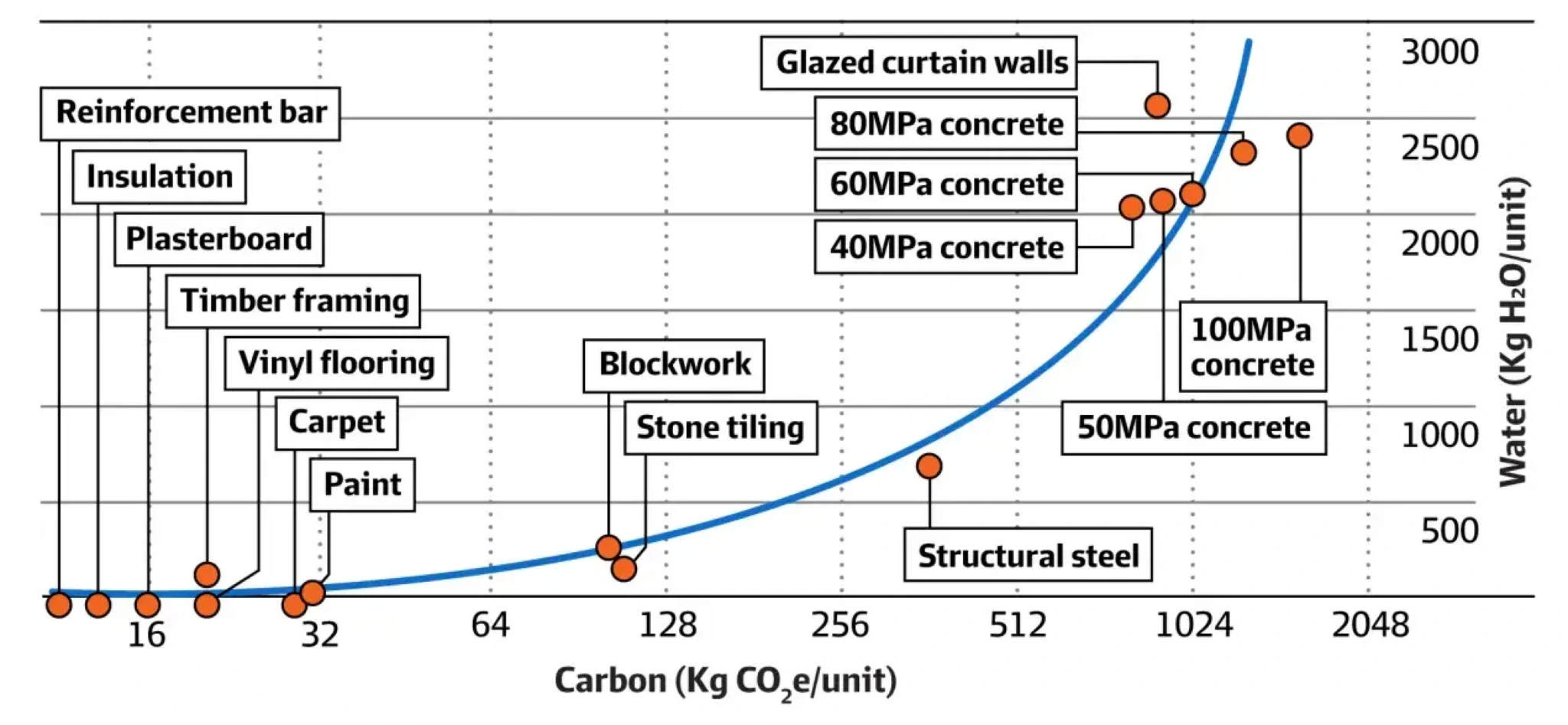
Water & Carbon of Common Building Materials — Slattery
 “Water is a little more complex than carbon, because to understand environmental impacts of the embodied water, we also need to consider scarcity whereas carbon impacts are universal.” Steve Ford
“Water is a little more complex than carbon, because to understand environmental impacts of the embodied water, we also need to consider scarcity whereas carbon impacts are universal.” Steve Ford
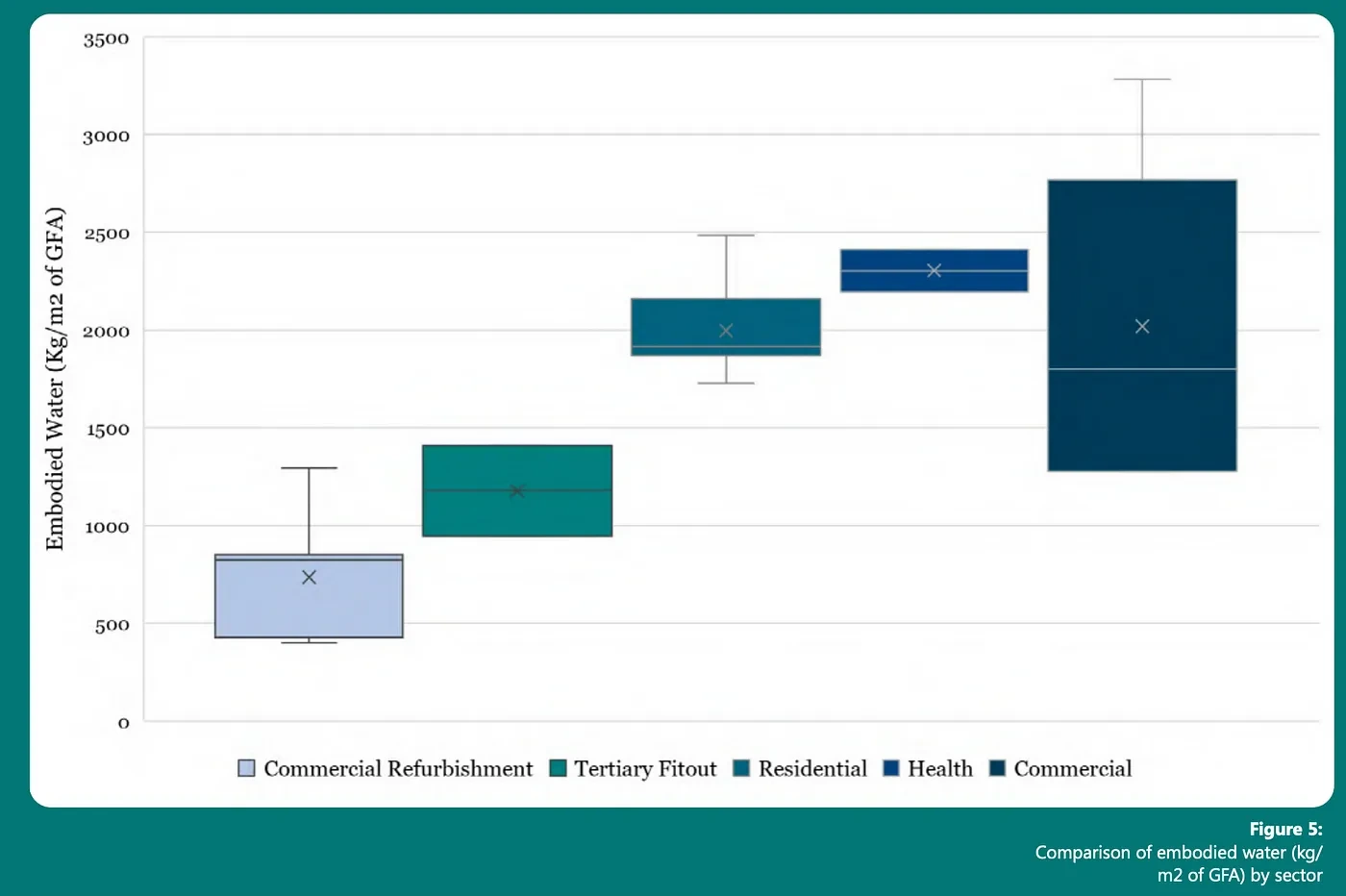
Strategies to follow
Strategies to lessen one environmental impact are likely to have a good impact on the other due to the association between materials with high embodied carbon and high embodied water.
Assessing embodied carbon throughout the design process will help identify and address areas that have the potential to reduce emissions.
An embodied carbon reduction of about 10% can be achieved without incurring additional costs by modelling and assessing embodied carbon impacts early in the project lifespan and then making wise design revisions.
We expect a consistent decrease in embodied water by reducing embodied carbon. Early in the design process, when the substructure, structure, and façade of a building are largely fixed, there are significant potential to cut emissions and embodied carbon.
Embedded water has the same properties.
For instance
1. Dematerialise & Minimize
Concrete and steel can be used in smaller quantities thanks to efficient design, without sacrificing the usefulness or value of the structure. Consider minimizing excavation and basement construction and reusing as much as you can of any buildings that may already be on the site. Instead of using layers of materials, choose raw finishes like polished concrete, or give “cold shell” fitouts rather than “warm shells” that renters may destroy and throw away in the garbage.
2. Recycle, Specify Repurpose
Encourage the demand for lower carbon material alternatives (A1–3 emissions), such as carbon neutral materials and low carbon concrete mixtures. Purchase cutting-edge materials for structures, such as cross-laminated wood rather than reinforced concrete. Use closed loop, circular economy principles to recycle, recover, and repurpose materials. Designing for disassembly will provide future flexibility by allowing goods and materials to be recycled as the asset develops. Don’t forget to look for materials that have Environmental Product Declarations that have been independently validated.
3. Collaborate & Share
Join forces with others in the sector to promote the embodied water issue. By emphasizing low embodied water and carbon materials, developers, owners, and tenants can use their purchasing power to advance the sustainability of supply chains. To better guide material selections, design approaches, and adjustments to building standards and governmental policies, data availability should be improved.
Start today
By choosing durable items and materials, you can lower embodied water impacts over time.
One way to start doing that, is to register on the 2050 Materials app which facilitates searching and finding transparent and durable materials for lower emissions.
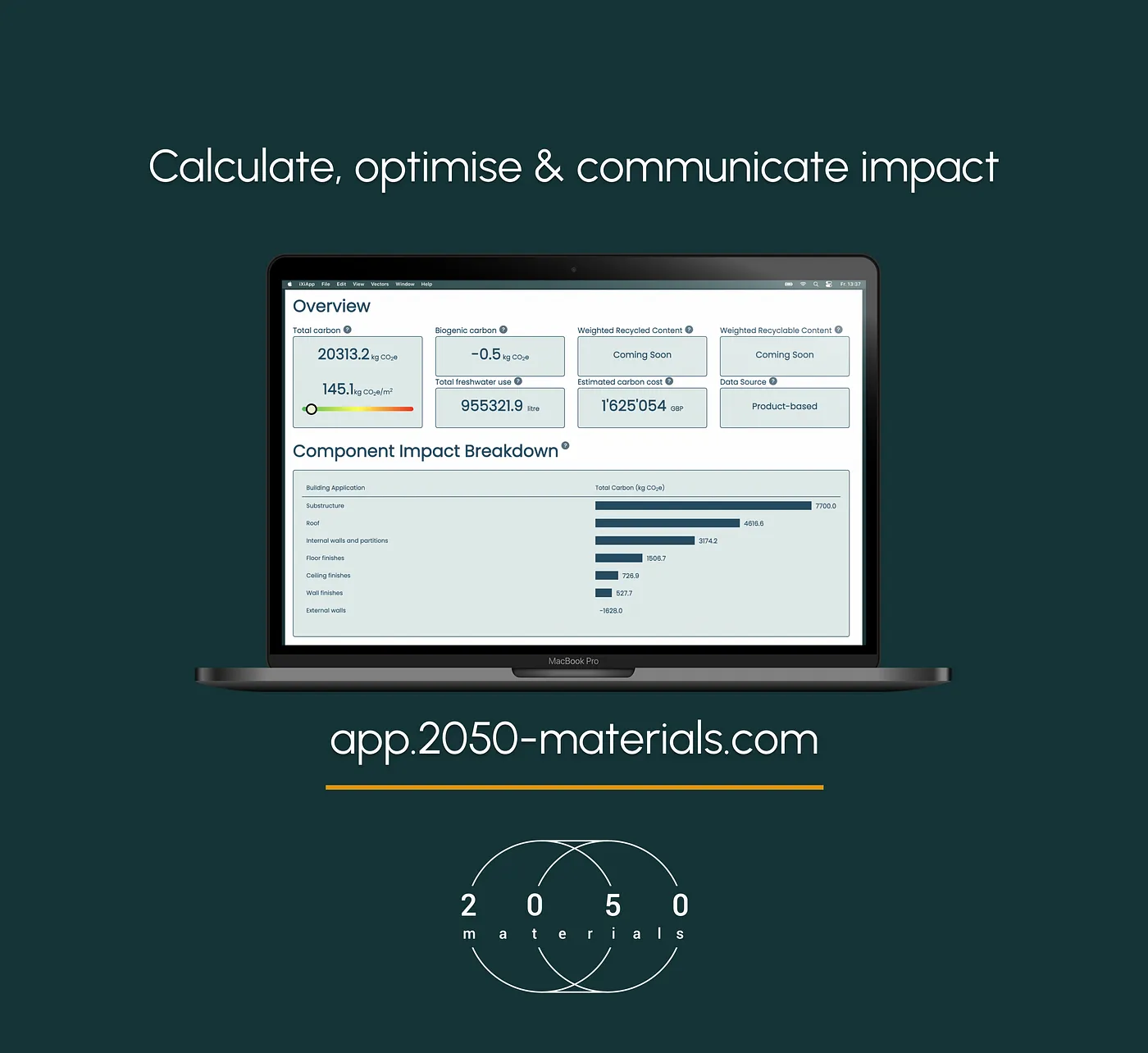
Sources
‘Embodied water’ is the latest challenge for the building industry — Financial Review
Embodied water: An untapped source of emissions reductions — Slattery
Related articles
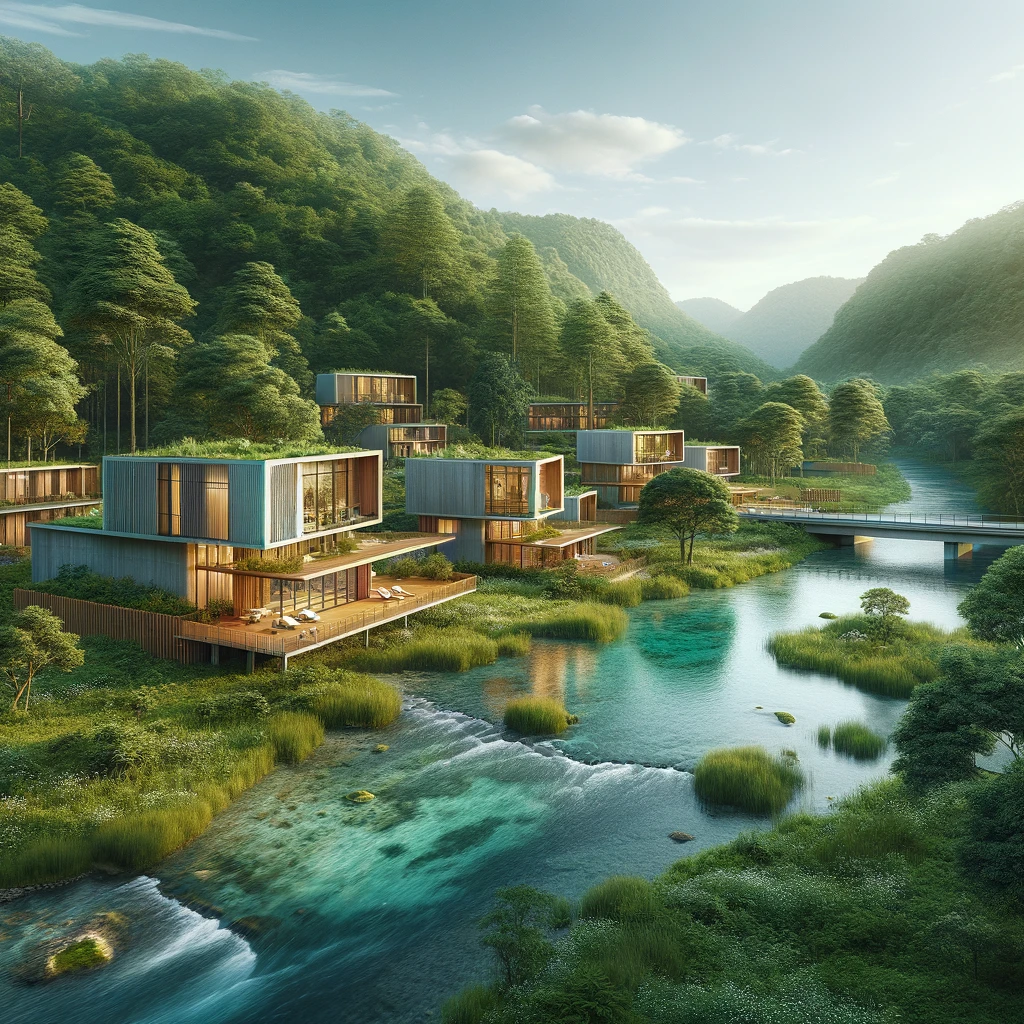
In order to measure biodiversity value and foster a future that is nature positive, Ramboll launches Metric
The Americas Biodiversity Metric 1.0 is a free biodiversity quantification tool that assists businesses and organizations in achieving their sustainability objectives, which include no net loss of biodiversity, net gain of biodiversity, and transitioning to a more nature-positive state.
Read more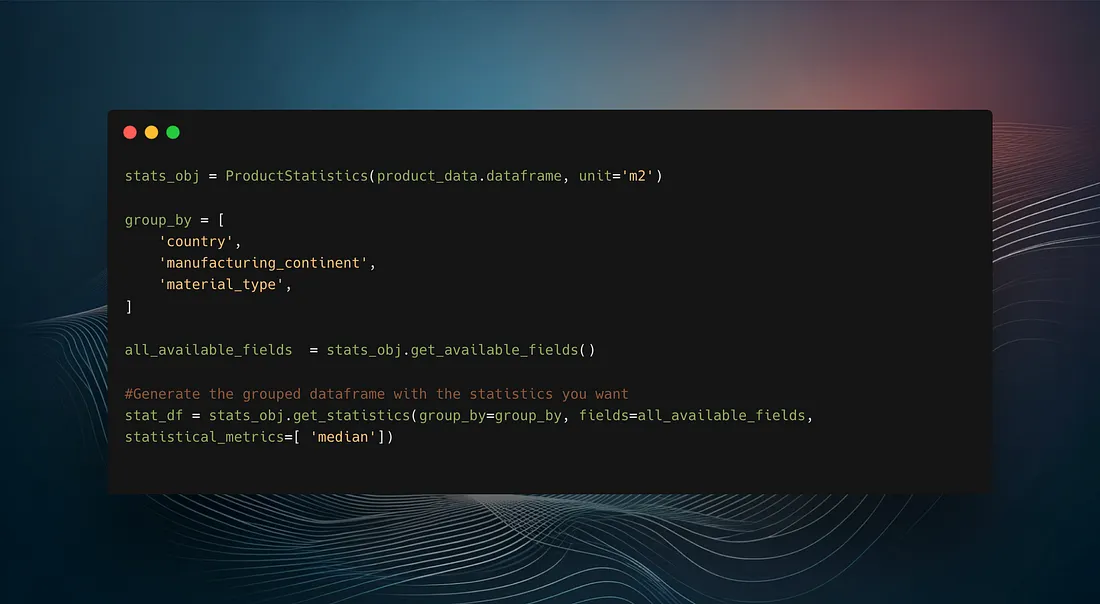
AECData Python Library Step 3— Visualizations & Statistical Analysis
Using the open-source Python package aecdata to do statistical analysis and plot graphs.
Read more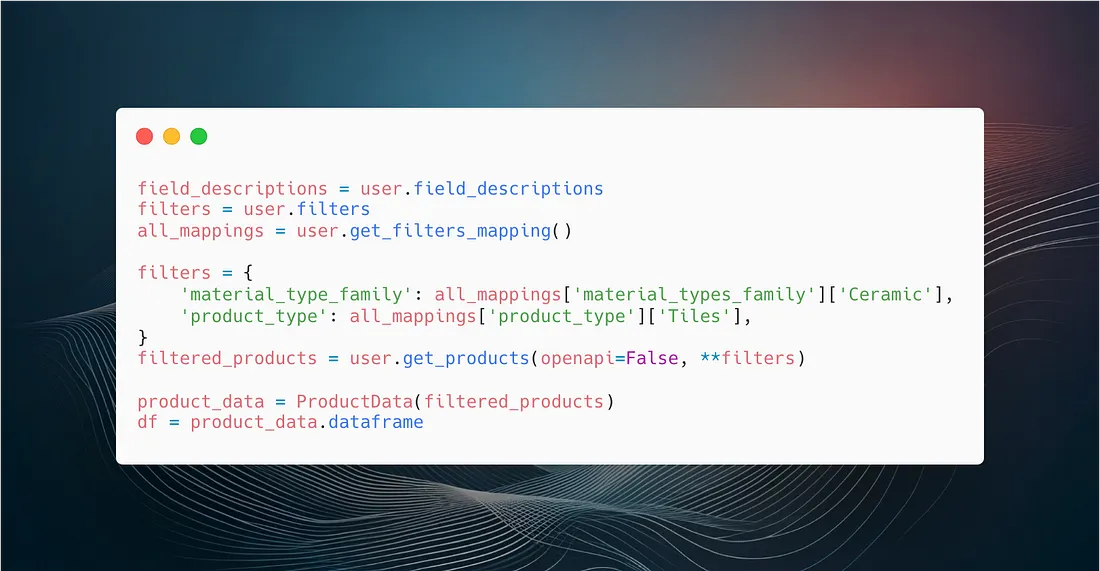
AECData Python Library Step 2— Get filters and retrieve product data
Get your first data table with AECData.
Read more